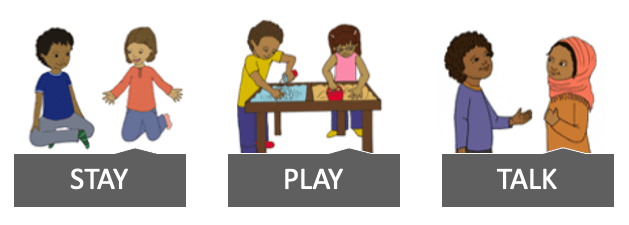by Molly Milam, Ph.D. & Jessica Hardy, Ph.D.
In our final webinar of the 2020 Positive Behavior series, “Making New Friends: Promoting Friendship and Belonging,” we discussed the peer-mediated intervention Stay-Play-Talk (SPT). This strategy can be so beneficial for children who are socially isolated!
Stay-Play-Talk can really be adjusted in so many ways to meet the needs of both the child and teacher. In this blog post we want to briefly review the steps for implementing SPT in the early childhood classroom. A more detailed explanation of this process can be found in the SPT implementation guide.
- Select Target Children – Children who do not regularly engage in play or conversation with their peers
- Select Peer Buddies – Children with similar interests as the target children, who engage in regular conversation with their peers, and who can follow adult prompts
- Consider Logistics – What other adults can help? How will data be collected? Use of reinforcement?
- Training – During the webinar we referenced several lesson plans available for providers to assist in training children to use SPT. Those sample lesson plans can be found here.In the video below a good example of whole group training for SPT can be viewed. Take a look.
This video provides an example of a small group training for SPT.
- Implementation and Data Collection – Evaluating how well SPT was implemented involves collecting data about paired children’s interactions. In the short video below, you can see how one teacher does this while giving feedback to the pair.
- Review Progress and Make Changes – The use of data collection forms help early childhood professionals to determine the progress children are making utilizing SPT and if any changes should be made.
If you missed the live webinar, a recording of the event, a copy of the slides, and all the available resources can be found at the webinar event page.
Videos & Image used with permission













